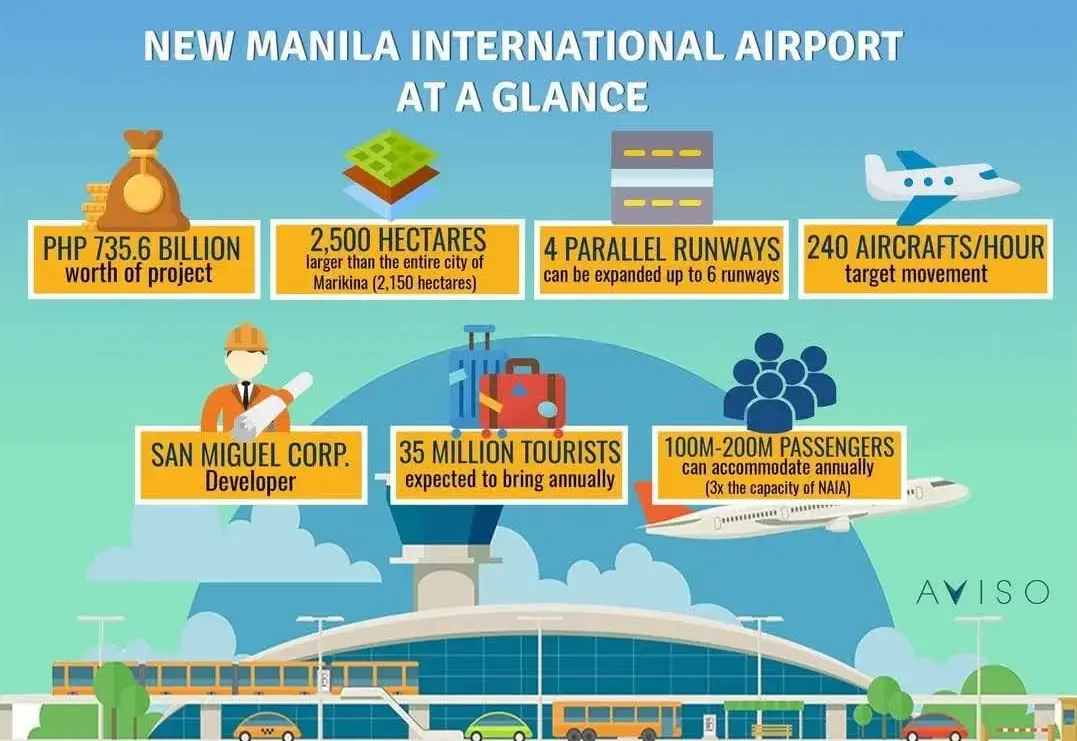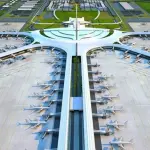Explore Our Exciting New Property Listings!
View Now →A Transformational Gateway for the Philippines
The New Manila International Airport (NMIA), set to rise in Bulacan, Philippines, is not just an infrastructure project; it is a monumental investment that promises to redefine the nation’s aviation landscape. Developed by San Miguel Corporation (SMC), a leading Filipino conglomerate, this project represents the largest single investment in the country's history, with an estimated cost of PHP 740 billion ($15 billion).
The Vision Behind NMIA
This ambitious project will be built on a vast 2,500-hectare (6,200-acre) site in Bulacan and is part of a more extensive 12,000-hectare (30,000-acre) township. The development is designed to handle 35 to 100 million passengers annually, making it one of Southeast Asia’s largest and most advanced air transport hubs.
Key Features of NMIA
- Four Parallel Runways: Ensuring efficient air traffic management and capacity for millions of passengers.
- World-Class Terminal: A state-of-the-art facility with modern passenger amenities, security systems, and commercial areas.
- Modern Infrastructure Network: Seamless connectivity through road, rail, and maritime links.
Eco-Friendly Design: Integrating sustainable features to reduce carbon emissions and promote green practices.

Economic Impact
The New Manila International Airport is expected to generate thousands of jobs during its construction and operational phases. It will also stimulate local economies, attract foreign investments, and boost the tourism sector.
Jobs and Opportunities
- Construction: 100,000 jobs during the building phase.
- Operations: 35,000 direct and indirect jobs.
- Tourism: An expected increase in international arrivals.
What This Means for Travelers
Passengers can expect world-class facilities, efficient air traffic management, and a smoother, more enjoyable travel experience. The airport will serve as a critical gateway to the Philippines and Southeast Asia.
Future Development Plans
- Construction of the terminal is set to begin in 2026.
- Expansion plans to increase capacity beyond 100 million passengers.
A township with residential, commercial, and industrial zones surrounding the airport.
The New Manila International Airport is not just an infrastructure milestone; it is a symbol of the Philippines’ ambition and growth. With world-class facilities, massive economic benefits, and a transformative impact on the country’s connectivity, NMIA is poised to become a premier gateway for millions of travelers.
Related posts:
Jamaica Urban Transit Company (JUTC) is set to receive 100 new buses in 2025, including eco-friendly CNG and diesel-powered coaches. Learn how this upgrade will enhance public transport.
The Philippines has launched its Digital Nomad Visa, a transformative opportunity for remote workers to live legally and work freely across the islands. Here’s how it works — and why it could change your life (or your investment strategy).


 JUTC New Buses in 2025
JUTC New Buses in 2025
 New Manila International Airport
New Manila International Airport
 The New Nomad Visa for the Philippines
The New Nomad Visa for the Philippines
 How to Renew Your Philippine Tourist Visa Online (EO408 - 30 DAYS)
How to Renew Your Philippine Tourist Visa Online (EO408 - 30 DAYS)
 9 Essential Things To Do, Before Arriving in the Philippines
9 Essential Things To Do, Before Arriving in the Philippines